This blog is published as part of Disability History Month (22 November to 22 December 2019).
Leprosy – now known as Hansen’s disease in order to remove the stigma with which it has often been linked – has a long and complicated history, from the ancient world to the present day, and across much of the world 1. The disease, which is itself extremely complicated and comprised of several strains, has historically presented in different ways and over different timescales, from benign cases (sometimes not outwardly visible) through to extremely severe manifestations, and has been subject to many different misconceptions over the years. The popular misconception – the image of the medieval leper, shunned by society and forced to live in rigidly policed and controlled isolation in order to save the general populus – may be a familiar story, but in reality individual reactions to the afflicted could be complex and often contradictory. In this blog I want to look at some of the ways in which leprosy features in our medieval collections.
The pious leper
Prior to the mid-14th century, and the devastating outbreak of plague known as the Black Death, the image of the leper was not always one of revulsion. The period between the Norman conquest and the Black Death saw hundreds of leprosaria (leper-houses) founded across the country, in line with a swathe of new religious foundations and hospitals. Leprosaria, much like hospitals, were often founded on the outskirts of towns and cities, but this was largely to reap the benefits of available space outside of congested urban centres, rather than to enforce isolation.
![Handwritten will of Joan Frowyk, Widow 16 May 1500. The text reads: ‘Item I bequeath to any lazour, be it man or woman being at time of my decease in the lazerhouse[s] of St Giles beside Holborn, Newenton [Newington] Green, the Loke beyond St George's bar, Hammersmith and Knightsbridge for to pray for my soul’.](https://cdn.nationalarchives.gov.uk/blog/wp-content/uploads/2019/12/04181140/leprosy-blog-PROB-11-12-74_680.jpg)
Will of Joan Frowyk, Widow 16 May 1500 ‘Item I bequeath to any lazour, be it man or woman being at time of my decease in the lazerhouse[s] of St Giles beside Holborn, Newenton [Newington] Green, the Loke beyond St George’s bar, Hammersmith and Knightsbridge for to pray for my soul’. Catalogue ref: PROB 11/12/74
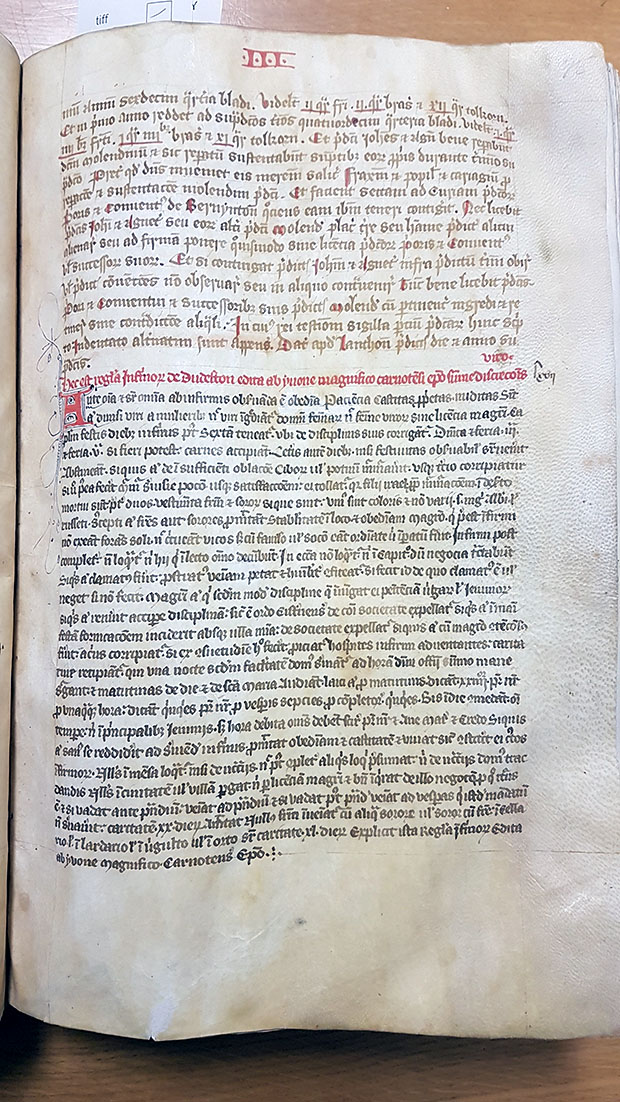
Regulations for an institution run by Llanthony Priory, Gloucester – Patients of opposite sex who associated without consent of the master received 40 days hard penitence, and fornication brought the punishment of automatic expulsion. Catalogue ref: C 115/77
Strict rules were sometimes imposed on leprosaria, in a similar vein to monastic foundations hospitals and almshouses, in order to ensure a contemplative life among the residents. A primary concern was that of chastity among the residents. While some leprosaria had different accommodation established for men and women, others (such as those administered by Llanthony priory) required vigilance amongst the staff and residents, and had strict punishments for those who disobeyed the regulations.
Subsidence of leprosy in England
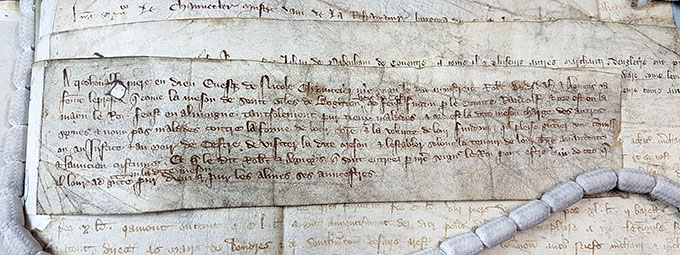
Robert Waldshaf and Agnes his wife, who are lepers, state that the Hospital of St Giles at Boughton, outside Chester, which was founded by Earl Ranulph and is now in the King’s hand, was founded for lepers alone, but is now charged with other people who are not sick. [1328-1330] Catalogue ref: SC 8/296/14783
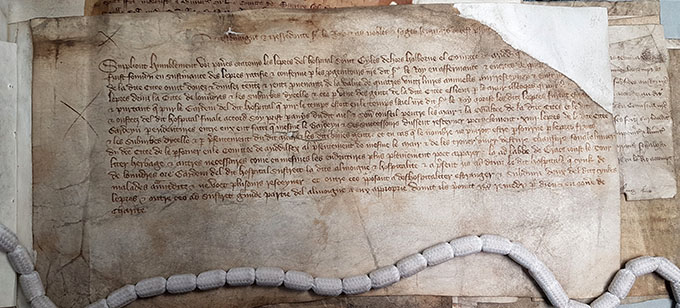
Lepers of the hospital of St Giles outside Holborn. The lepers request remedy as the current master of the hospital, the abbot of St Mary Graces has withdrawn the alms and hospitality that they are assigned and does not wish to receive further sick into the hospital to bring it up to its full total. [c.1399-c.1413] Catalogue ref: SC 8/324/E617B
‘Social stigma’: Rising fears of disease

Mustardere v The Sheriffs of Norwich Action of trespass brought by John Folkard against the complainant for denouncing him as a leper. Catalogue ref: C 1/46/158
In the wake of the Black Death, however, fears of contagion and of leprosy became increasingly more stark. The 15th-century Chancery petition of William Mustardere, parson of the parish church in Sparham in Norfolk, illustrates the complex nature that fears might manifest themselves. Mustardere, claiming that one John Folkard, the son of a Norfolk alderman, was ‘greatly infect with the sickness of lepre’, had secretely advised him from the confessional on several occasions that ‘his sickness was contagious’, and that he should therefore depart and keep himself out of fellowship.
Whatever the parson’s motivation in suggesting this course of action, his recommendations were not well-received, with Folkard stating that he would regret ever making such a statement. Mustardere, in a final attempt to force Folkard’s hand, decided to inform the rest of the parish community of John’s alleged sickness, at which point many of his servants ‘would no longer abide with him…seeing the said sickness show upon him so evidently [and] would not be accompanied with him’.
Did Folkard suffer a major deterioration in his condition, so that it was clearly visible to his servants in a way it hadn’t been before, or were they viewing him differently in response to Mustardere’s announcement 2. In either case, John’s kinsmen and friends in Norwich remained loyal to him, and helped him to take a case of trespass against William in the sheriff’s court, upon which William found himself held in prison, where he petitioned the Chancellor and outlined what had occurred in Sparham.
Official reactions
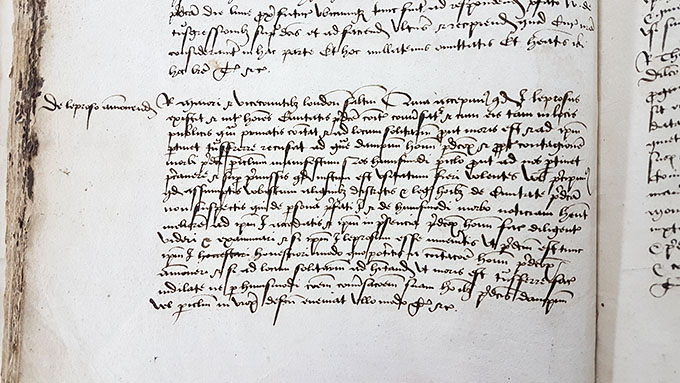
Writ de leproso amovendo (copied into a 16th-century precedent book). Catalogue ref: C 193/1
Mustadere’s case represents an example of local responses to leprosy, but what was the official response? Two examples from the records of the common law courts hint at both the fears within society following the Black Death, but also the practices of assessing suspected lepers. The full force of the common law was not often used in practice to remove lepers from society, but it was possible. The writ de leproso amovendo could lead to individuals being ejected from society, but we don’t often see it used in practice. One such example from 1420 shows the sheriff of Lincolnshire rebuked for failing to have carried out the assessment of a Boston mercer, John Louth, who (it was alleged):
‘commonly mingles with the men of the aforesaid town and communicates with them in public as well as private places and refuses to remove himself to a place of solitude, as is customary and as it behoves him to do, to the serious danger of the aforesaid men and their manifest peril on account of the contagious nature of the aforesaid disease’ 3.
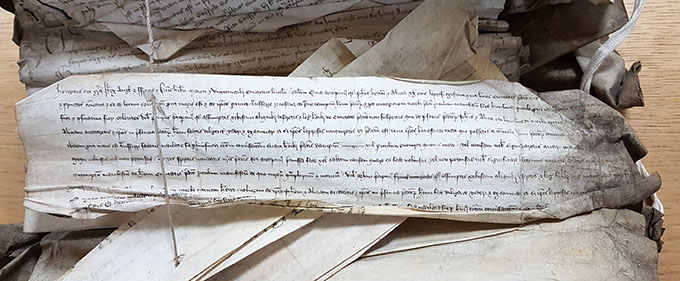
Writ and return in the Recorda files of the King’s Bench, assessing John Hedon and his wife Alice, alleged lepers living in Lincoln. Catalogue ref: KB 145/6/24
A similar writ of May 1446 was issued to the mayor and sheriffs of Lincoln, to assess John Hedon and his wife Alice, who were allegedly living as lepers in the community, although John was declared to be free of the disease, while Alice could not be found.
![Document which shows Joanna Nightingale proving her health before royal officials [July 1468].](https://cdn.nationalarchives.gov.uk/blog/wp-content/uploads/2019/12/04182626/C-54-320_680.jpg)
Joanna Nightingale proving her health before royal officials [July 1468]. Catalogue ref: C 54/320 m. 17d
Reactions and responses to leprosy and lepers in late medieval England could be complex, contradictory, and certainly were not universal. Fears of infection after 1348 could sit hand in hand with the care and reverence for the afflicted shown in pious bequests and leprosaria, with processes in place at both the local and national level to try and manage the care of those living with leprosy with respect.
Notes:
- In this blog I will be using the terms ‘leprosy’ and ‘leper’ within their medieval contexts – following the vocabulary used within Carole Rawcliffe’s ‘Leprosy in Medieval England’ (pp.11-12). As Rawcliffe argues, to describe medieval lepers as ‘sufferers from Hansen’s disease’ is both anachronistic and misleading, and instead we need to engage with these figures in their own historical context. ↩
- It is interesting to consider how visible conditions like this would have been in medieval England, where much of an individual’s skin would be covered up in everyday life. Did the condition present on Folkard’s face – the most visible part of the body – lead to wider attention? The question of visibility is further detailed in Rawcliffe, ‘Leprosy in Medieval England’, p. 197. ↩
- Catalogue ref: KB 27/635 rex rot.4 ↩